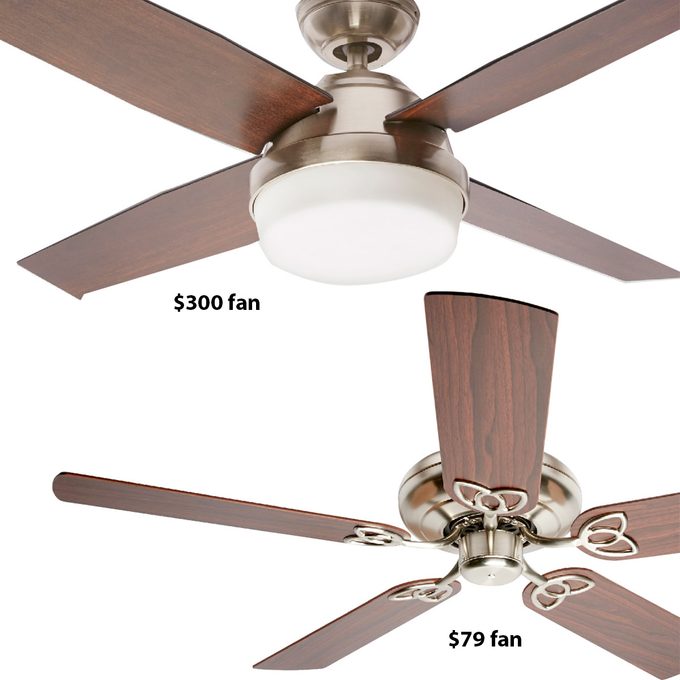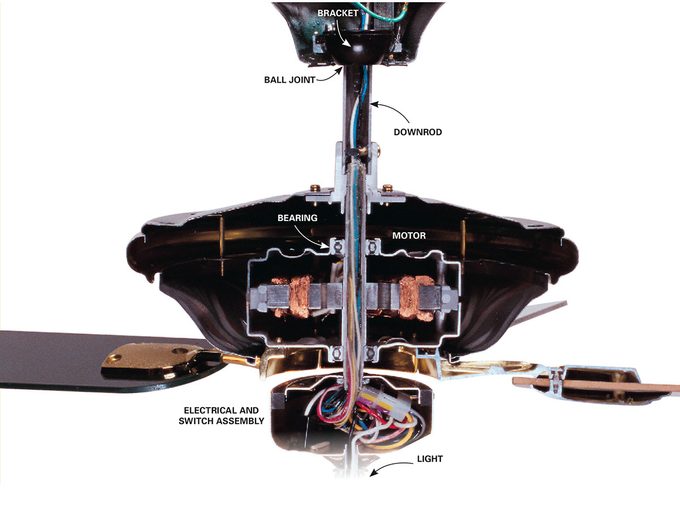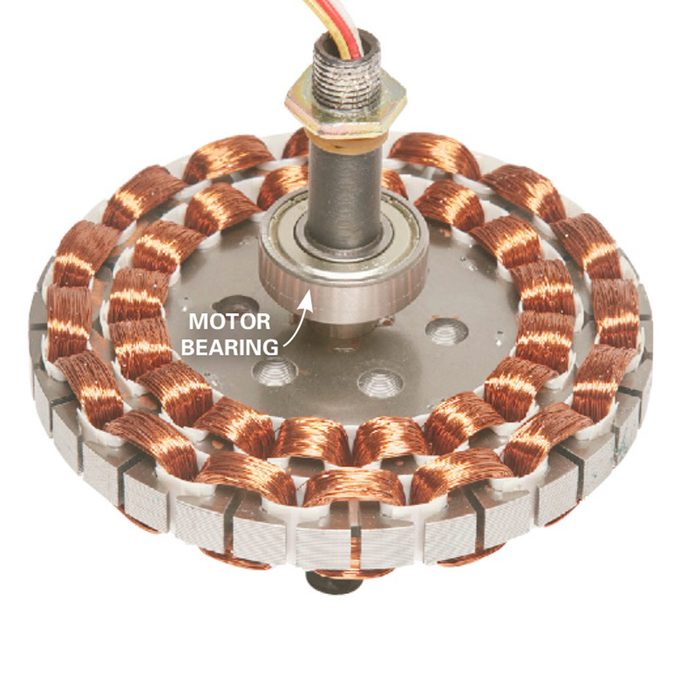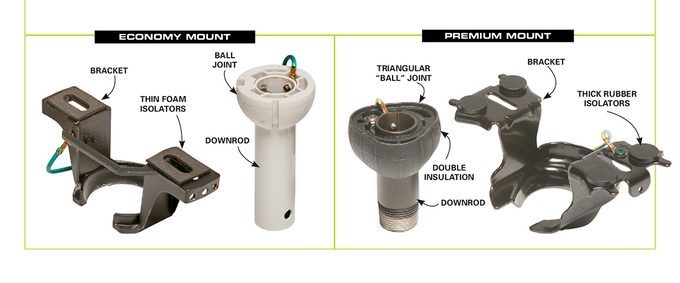With Ceiling Fans, You Get What You Pay For
If y'all've ever shopped for ceiling fans, you've probably been struck by the huge cost variations. Fans with the same style and features, blade size and air movement (cfm) specs can toll anywhere from $eighty to $300. We wondered if there's actually an electrical/mechanical difference between the loftier-priced fans and the economic system models, and whether those differences were worth the extra cash. So nosotros called in Tom Breeden, vice president of technology at Hunter Fan, to get his take on the issue. Nosotros learned that there are 2 key questions to ask yourself:

1. How much does racket affair to you?
Fan manufacturers offer some dandy-looking models at really depression prices. To sell at those prices, the manufacturers employ lower-quality bearings and mounting brackets with minimal noise isolation. The racket levels may be tolerable when the fan is new, but once the bearings wearable, the fan will start to wobble and transmit an annoying rumbling audio across your ceiling. Premium fans, on the other hand, are built with high-quality bearings filled with synthetic grease to ensure long life and minimal wear. They besides comprise noise-dampening features into the body, bract irons, downrod connections and ceiling mount to isolate the vibrations created by the fan blades. Racket probably won't exist an effect if you're installing the fan in a kitchen, eating surface area or family room. Merely if you're buying the fan for a sleeping room, living room or study, Tom recommends digging deeper to get a better-quality unit of measurement.
Plus: Learn how to gear up a wobbly ceiling fan yourself.
ii. Will y'all run it constantly?
Besides longer-lasting bearings, premium fans include higher-quality remote control electronics, switches and speed controls. If y'all program to run the fan constantly and want to avoid trouble, buy a premium fan. That's peculiarly truthful if the fan will exist mounted on a high ceiling where service or replacement can be a real hassle. Tom says fan noise, wobble and shorter life bridge are the three biggest complaints virtually economy fans, and he doesn't recommend them for any location. Simply we call up low-cost fans tin can be a good choice if yous're on a budget and need a fan for a kitchen, family unit room or a low-use invitee room. Choose a premium fan for a principal bedroom or other areas where you expect peace and quiet.
The innards are what affair

The differences in these small-scale parts may non look significant, merely they play a big function in the fan's noise level and longevity.
Motor bearings: Loftier-quality bearings are the most important component of a premium fan. Depression-quality bearings wear out rapidly and make noise that transmits up to the ceiling.
Mounting systems: On economy fans, the notched single-insulated ball-and-bracket pivot design transmits more vibration to the bracket. The foam-rubber noise isolators compress during installation, allowing the bracket to contact the ceiling and transmit noise. On premium fans, the double-insulated and ribbed triangular "ball" joint transmits far less noise to the bracket. The iv safe noise isolators prevent the bracket from touching the ceiling, farther reducing dissonance transmission.
Electronics and switches: Economy speed and calorie-free switches and motor run capacitors fail far more than often than premium components.


Plus: Learn how to install a ceiling fan remote.
holstongerfinst96.blogspot.com
Source: https://www.familyhandyman.com/article/with-ceiling-fans-you-get-what-you-pay-for/
0 Response to "With Ceiling Fans, You Get What You Pay For"
Postar um comentário